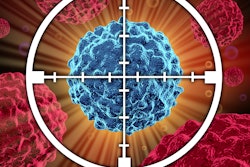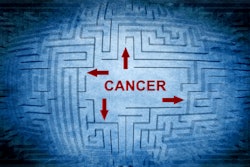Cancer mortality rates continue to drop -- although incidence of the disease is rising in women, according to an annual study released by the American Cancer Society (ACS).
The report, called "Cancer Statistics 2025," shows that the cancer mortality rate declined by 34% from 1991 to 2022 in the U.S., averting approximately 4.5 million deaths. But this positive statistic is shadowed by an increasing incidence of many cancer types among women and younger adults, including cancers of the oral cavity, pancreas, uterus, and liver, the society said. The findings were published January 16 in CA: A Cancer Journal for Clinicians.
A team led by Rebecca Siegel of the ACS reported that cancer incidence rates in women 50 to 64 years of age have surpassed those in men, and rates in women under 50 are now 82% higher than their male counterparts, up from 51% in 2002. This trend includes lung cancer, which is now higher in women than in men among people younger than 65, Siegel said in an ACS statement.
"Continued reductions in cancer mortality because of drops in smoking, better treatment, and earlier detection is certainly great news," she noted. "However, this progress is tempered by rising incidence in young and middle-aged women, who are often the family caregivers, and a shifting cancer burden from men to women, harkening back to the early 1900s when cancer was more common in women."
The report predicts an estimated two million new cancer diagnoses and 618,120 cancer deaths in the U.S. this year. It also warns of "lagging progress" against pancreatic cancer -- the third leading cause of cancer death in the U.S. Both pancreatic cancer incidence and mortality rates are increasing, and the five-year survival rate is 8% for nine out of 10 people diagnosed with pancreatic exocrine tumors, the ACS said.
The study also outlined continued inequalities in cancer mortality, with rates in Native Americans two to three times higher than whites for kidney, liver, stomach, and cervical cancers. Blacks are twice as likely to die of prostate, stomach, and uterine cancers and 50% more likely to die from cervical cancer compared with white people, the society said.
On the positive side, however, cancer incidence in children aged 14 and younger has decreased in recent years, dropping by 70% -- primarily due to improved leukemia treatment, according to the ACS.
The report "underscores the need to increase investment in both cancer treatment and care, including equitable screening programs, especially for underserved groups of patients and survivors," said Wayne A.I. Frederick, MD, interim chief executive officer of the ACS and the ACS Cancer Action Network. "Screening programs are a critical component of early detection, and expanding access to these services will save countless lives."
The complete report can be found here.



















